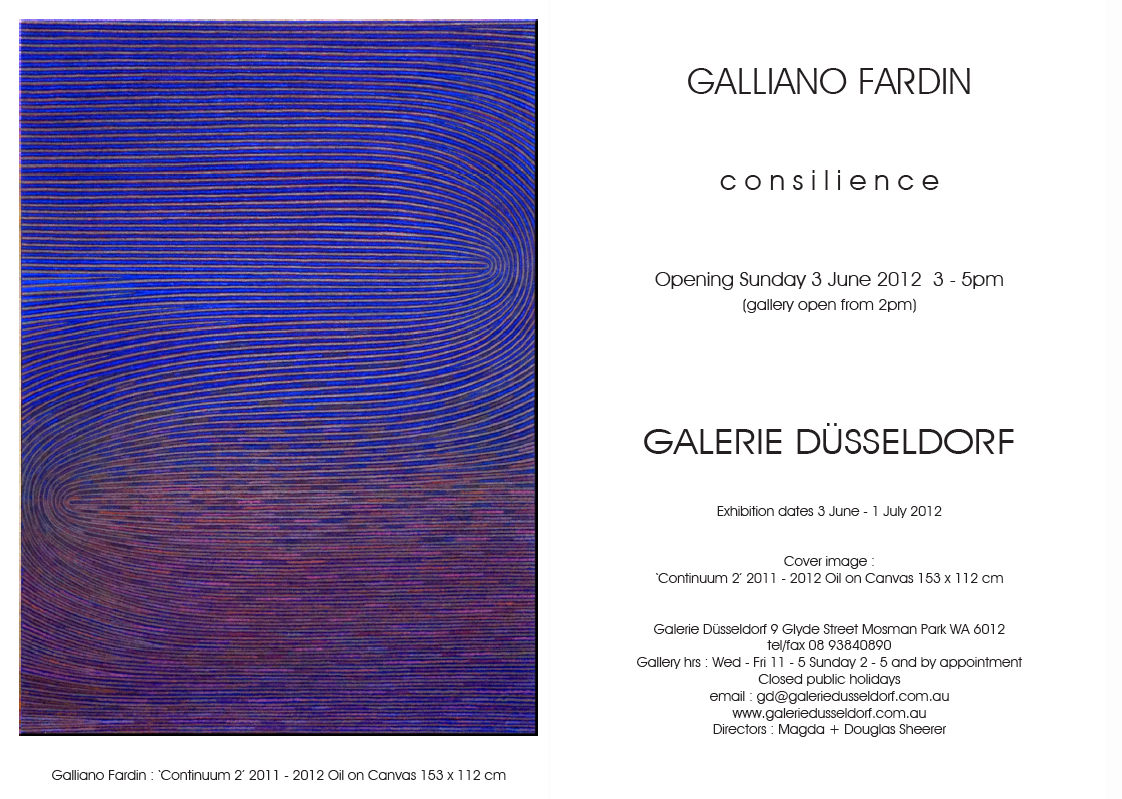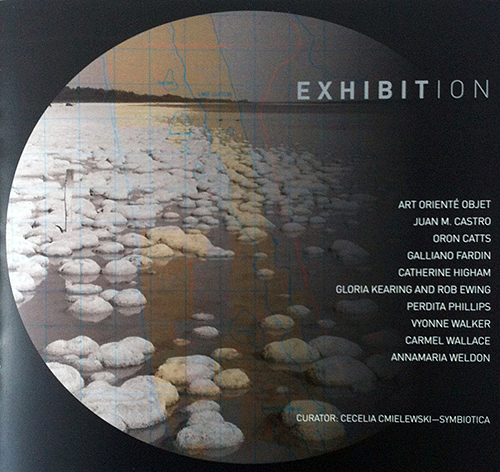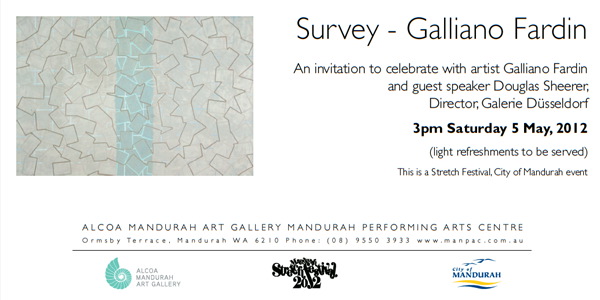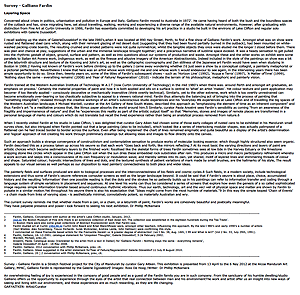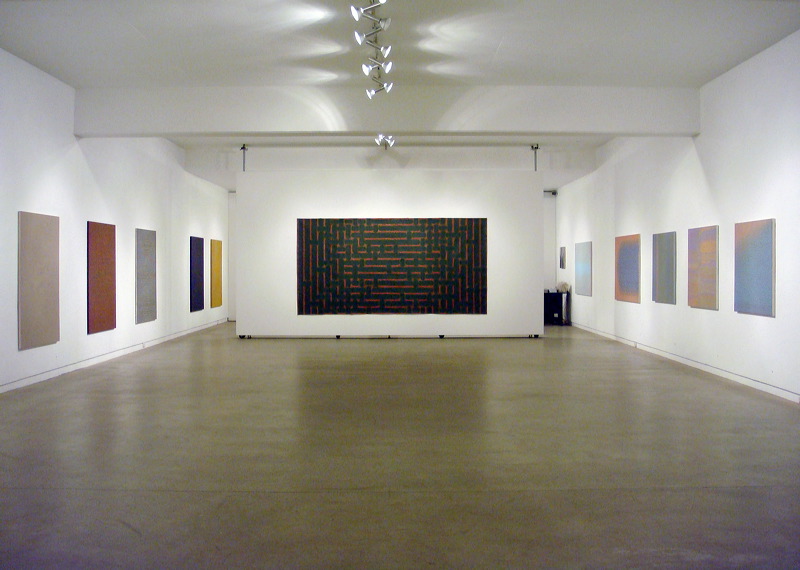GALERIE DÜSSELDORF
GALLIANO FARDIN
- Scroll down to view previous exhibitions and news -
2015
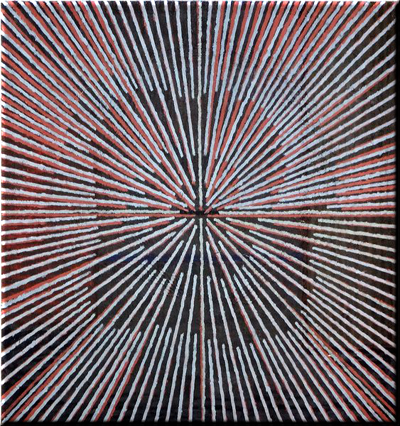
Galliano Fardin : Stargazing 7 2013 Oil on canvas 50 x 47 cm $3,500
flow : Galliano Fardin : Bankwest Art Gallery 23 June - 13 October 2015 (Curator Sandra Murray)
|
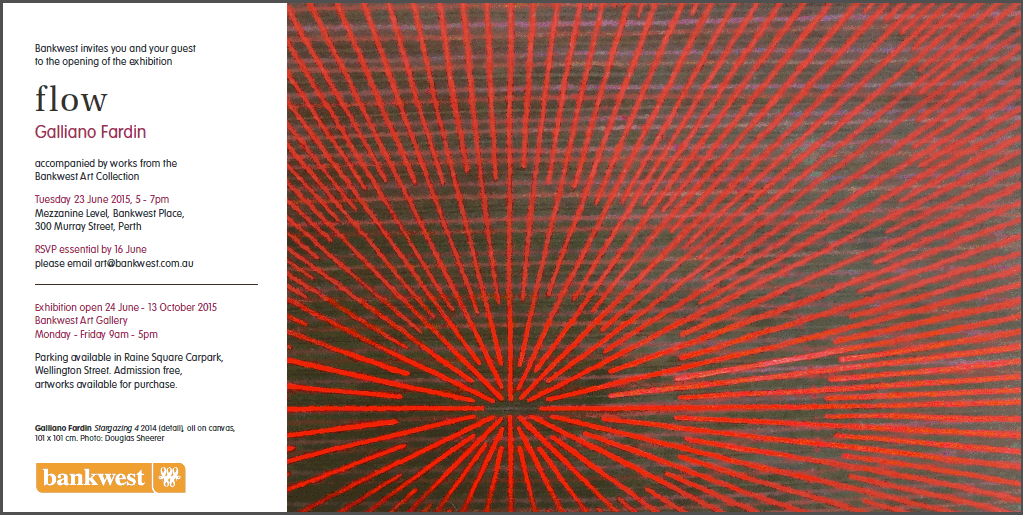
Galliano Fardin : Consilience
Galerie Dusseldorf : 3 June - 1 July 2012
|
Symbiotica : 4 May - 3 June 2012 GALLIANO FARDIN YALGORUP The Lake Clifton area has been my home base since the eighties. In this place I have had the opportunity to witness and to reflect on the changes that are continuously affecting everything around us. The northern end of Lake Clifton was connected to the ocean only a fewthousand years ago. The thrombolites which inhabit the eastern shore owe their existence to the freshwater runoff from the higher ground to the east. In nature nothing is static, adaptations happen whenever opportunities arise or when circumstances change. These natural changes are 'evolution' at work. We owe our existence to these processes but changes of a different nature are taking place all over the planet. Certain human activities, often driven by greed or lack of foresight are undermining the natural order of things. Introduced weeds and pests follow in the wake of new developments everywhere. The interference and disruption of the habitat is not evolutionary; it is destructive. Lake Clifton is a small body of water of great significance, it has become a test case for the way we deal with threatened ecosystems. This is my 'small' version of the story; the big picture belongs to the Nyungar people of this region. GALLIANO FARDIN Galliano Fardin, Yalgorup, 2011 oil on canvas.101 x 101 cm Represented by Galerie Düsseldorf Galliano Fardin was born in Mogliano Veneto, Italy in 1948 and arrived in Australia in 1972. He lives and works Lake Clifton, Western Australia. The paintings of Galliano Fardin are a consequence of memories and impressions of the Western Australian landscape. Fardin's essential concern is to find a physical experience and understanding of the land, rather than the traditional need to characterize landscape in a literal sense. Fardin's memories and notions of the land are translated onto canvas as marks, textures and colour. which echo the experience of living and working in the environment. www.galeredusseldorf.com.au Galliano Fardin's accomplished abstract paintings are renowned for their scope and subject matter A quote from 2010 provides insight into his motivations: "The workings of nature through its endless mutations and adaptations to changing circumstances are a creative endeavour which has inspired humanity on our Journey through history. The realisation that we humans can unleash so much destructive power on a global scale, implies that we may also have the means to make some necessary corrections. Through this we could reconnect our creativity to the creative power of nature."3 Fardin does not depict landscape in the traditional sense. His Intention is that the abstract works elicit a direct and physical response in the viewer. The viewer has a palpable response to his visual patternings drawn from his observations. He has lived near Lake Clifton since the 1 980s and has a daily encounter with the life in it and around it. The Lake is the inspiration for many of his works and his environmental observations through his writings. Catherine Higham is interested in water as a subject of scientific research, still life is a short documentary film composed of still images taken over a two year period that makes links between bio indicators and water quality in Australia. A bioindicator shows the response in organisms, populations or ecosystems caused or influenced by humans in bio-molecular. biochemical. or physiological levels. Catherine s sound/still/video essay walks us through a landscape observed both at a human scale and at the microbiological level. This piece encourages the viewer/listener to engage sensorially with these landscapes, still life generates a sense of unquiet, asking us to consider the personal roles played. |
download/read Catalogue essay by Dr. Phillip McNamara
Friday 13 April / Sunday 6 May 2012
ALCOA MANDURAH ART GALLERY
PAINTINGS BY GALLIANO FARDIN - STRETCH FESTIVAL - CITY OF MANDURAH
Fardin’s paintings are a reflection of his everyday life experience at Lake Clifton
and of travelling across the big Spaces of the Western Australian landscape.
Alcoa Gallery Mandurah Arts Centre. Stretch Festival Saturday 5 May & Sunday 6 May.
Official opening of the Stretch Festival 6.30pm Friday 4 May.
Exhibition dates – Friday 13 April / Sunday 6 May. IN-11/4 OUT-7/5
Galliano Fardin is represented by Galerie Düsseldorf, Perth.
(Solo exhibition at Galerie Düsseldorf : 3 June - 1 July 2012)
Galliano Fardin : Fear of Failure / Regeneration - Galerie Düsseldorf 11 July - 8 August 2010
|
Artist's Home and Studio at Lake Clifton - 2 hours south of Perth



